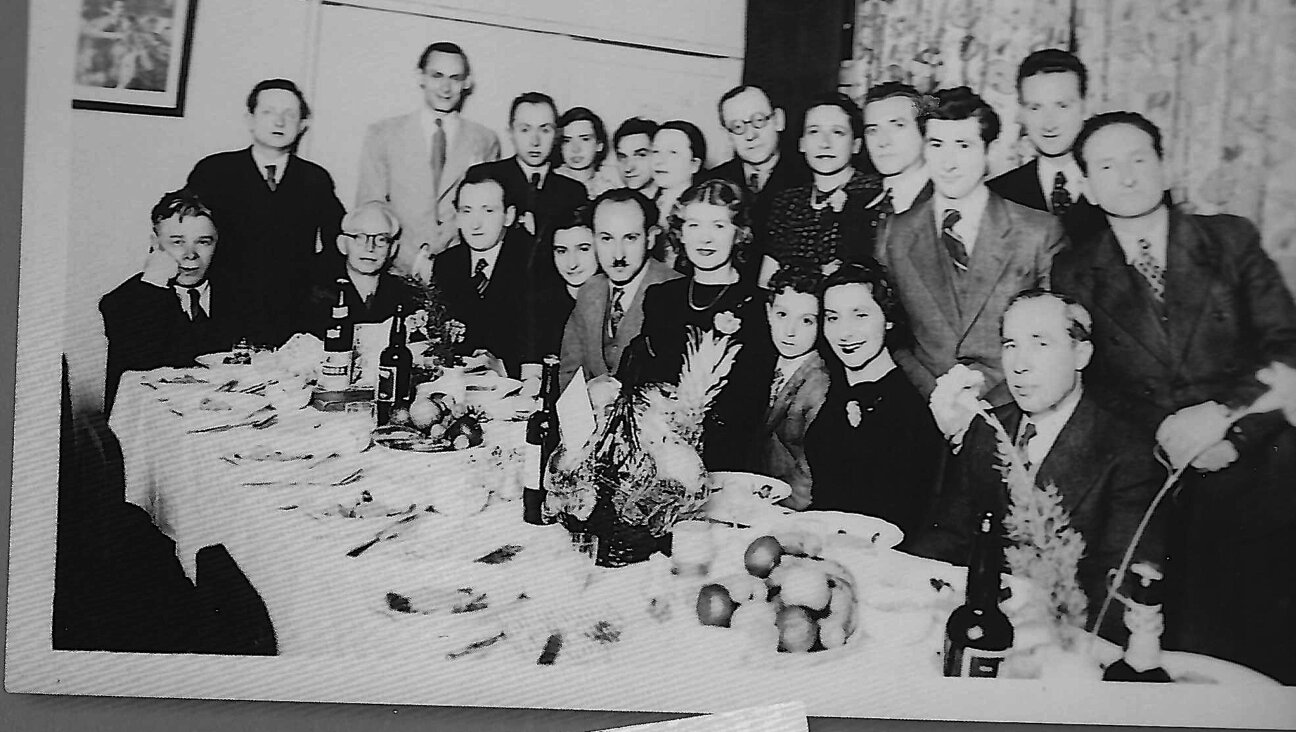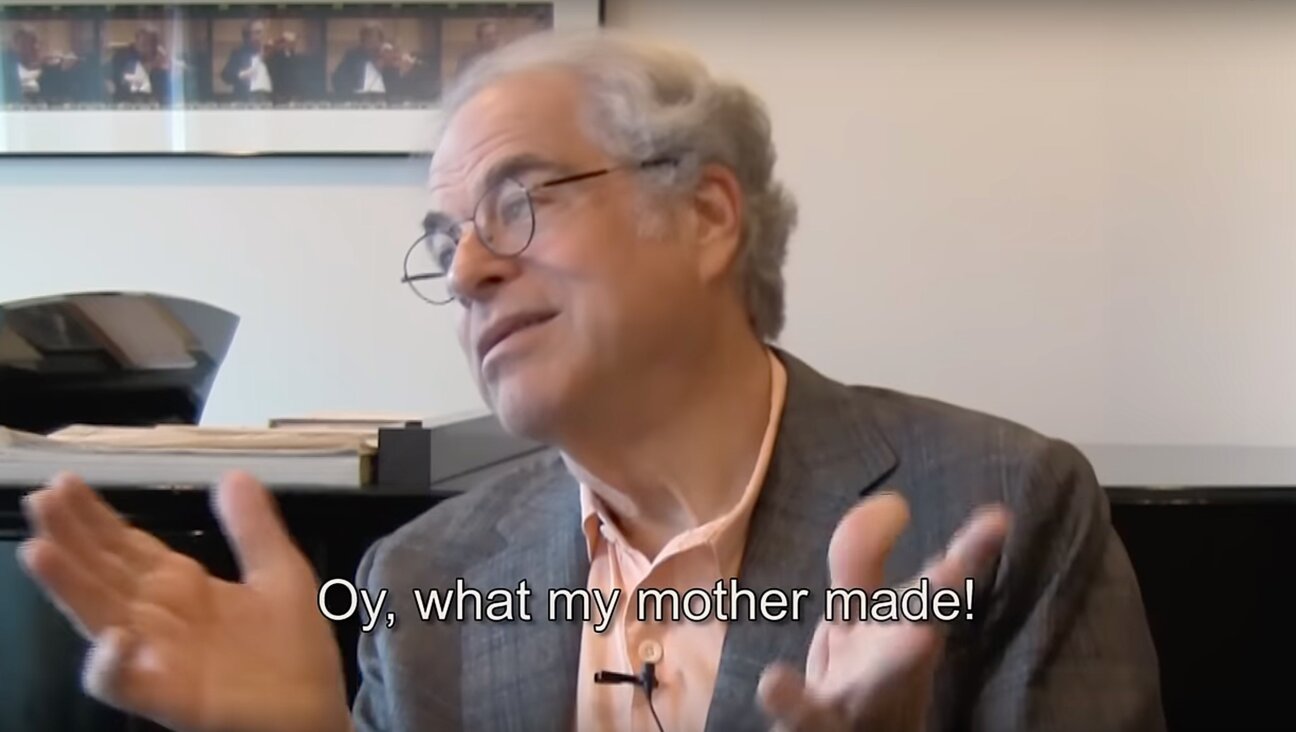What does Yiddish scholar Samuel Spinner mean by Jewish primitivism?

Image by Wikimedia Commons
Samuel J. Spinner
Jewish Primitivism
Stanford University Press, 272 pp.
According to the Russian־Jewish art critic, Abram Efros (1888-1954), modern Jewish art needs to embody two principles: European modernism and Jewish folk art.
In his article, “Aladdin’s Magic Lantern,” Efros wrote that “the face of modernism is turned outwards, while folk art turns inward.” Efros’ essay was supposed to be an introduction to the “Album of Jewish Artistic Heritage” – an ethnographic study by the Yiddish writer, S. An-ski, based on expeditions An-ski headed between 1912-1914, where the team gathered materials and photographed Jewish daily life in pre-Revolutionary Russia’s Pale of Settlement.
Due to the break-out of the Russian Revolution in 1917, however, the book was not published until 2001. An-ski was forced to flee from Communist Russia while Efros eventually became a distinguished Soviet art scholar and did not write on Jewish themes.
Since then, most scholars of Jewish culture (especially, in the fields of Yiddish and Hebrew literature) have focused primarily on the first of these two principles – European modernism, aiming to show that modern Jewish culture was actually part of the European mainstream and in no way backward, as assimilated Jewish intellectuals often implied.
But a new book by Professor Samuel Spinner, Jewish Primitivism, considers the second principle: the role of so-called primitive folklore in the renaissance of Jewish culture at the turn of the twentieth century.
At that time, individual European artists had already discovered the art of African cultures, which at the time were called “primitive.” Among Jews, Spinner writes, this concept meant something else. Modern Jewish artists found “primitive” culture not in distant and exotic overseas regions, but in their own backyard, in the shtetls of Eastern Europe. “Jewish primitivism was a product of the effort to create and consolidate identity and nationhood through Jewish culture,” as Spinner explains.
The main figures in Spinner’s study are authors and artists who in one way or another drew inspiration from Jewish folk culture and Hasidism – the mystical Jewish movement founded in the 18th century in reaction to the rigid academicism of rabbinical Judaism – creating a distinctively modern Jewish aesthetic. Among these figures are the Yiddish-language authors Y. L. Peretz, S. An-ski, and Der Nister; the Yiddish and Hebrew poet Uri-Zvi Grinberg, and the German-Jewish writers Franz Kafka, Alfred Döblin, Joseph Roth, Else Lasker-Schüler, as well as the photographer Moyshe Vorobeichic.
Peretz was the first well-known Yiddish writer to incorporate these themes in his work. He didn’t simply introduce elements of Jewish folklore in his stories and poems but re-imagined them completely in his collections, “Tales in Folk Style” and “Hasidic.” In contrast to the maskilim, the adherents of the Jewish Enlightenment, Peretz considered Hasidic works like “In Praise of the Baal Shem Tov” and “Reb Nachman’s Stories” as foundational texts of modern Jewish literature.
In reality, Peretz’s version of “Hasidic” was completely different from the actual Hasidic culture of his day. Peretz came of age in an environment immersed in the Enlightenment in the Polish city Zamosc, and was barely acquainted with the Hasidic way of life.
Among assimilated German-language writers like Franz Kafka and Alfred Döblin, Hasidim embodied “authentic” Eastern-European Jewish culture. Kafka encountered them in his hometown, Prague, while Döblin discovered Hasidim during his travels in Poland following World War I. These encounters with “authentic”, though entirely foreign Jews motivated these assimilated Jewish writers to reconsider their own Jewishness through a new perspective.
In contrast to Kafka and Döblin, Joseph Roth came from Galicia, and devoted his creative energies to inspire sympathy among his German readers for the plight of Jewish refugees pouring into Germany and Austria during and after World War I. Greenberg had a completely opposite political motivation: to mobilize the “uncivilized” Jews in the struggle to reclaim the land of Israel.
A whole chapter of the book is dedicated to Der Nister and his stories in the collections, “Imagined” and “From My Estates”. These confusing texts do not lend themselves to straightforward interpretations. Spinner argues that this was precisely the author’s intention. Der Nister’s stories are a model of literary “primitivism,” which he had inherited from his folk sources. The author renounces his own control over the plot of his stories, even though he himself had conceived them. In this process, the boundaries between the narrator and his characters, between internal fantasy and external reality, between Jewishness and its alternatives, are erased, as Spinner concludes. And this is what signifies Der Nister’s own political radicalism.
“Jewish Primitivism” deals with important phenomena in Jewish cultural history and it poses several important questions. Is Peretz, in fact, the “founder” of this artistic approach? True, he did create his own poetics out of Jewish folklore, but one could also say the same for Sholem Aleichem in his novel “Stempenyu” about a klezmer musician with that name – a work that was based on the author’s own research into klezmer culture. And before that, Mendele Moykher-Sforim portrayed an array of “primitive” Jewish types in his novel, “Fishke the Lame.”
Spinner considers the aesthetic and political aspects of primitivism, but he mostly ignores the ethical dimension, which was particularly significant for An-ski. As a student of the Russian “narodniks” (populists), An-ski sought ethical values in Jewish folklore, which he felt placed the Jewish people on a higher moral plane than their European neighbors. For him, Jewish folk creativity was a vehicle for the spiritual education of assimilated Russian Jewry. Spinner’s book considers many diverse examples of Jewish primitivism in art and culture, but the issues that he touches on reach much further and deeper.

























